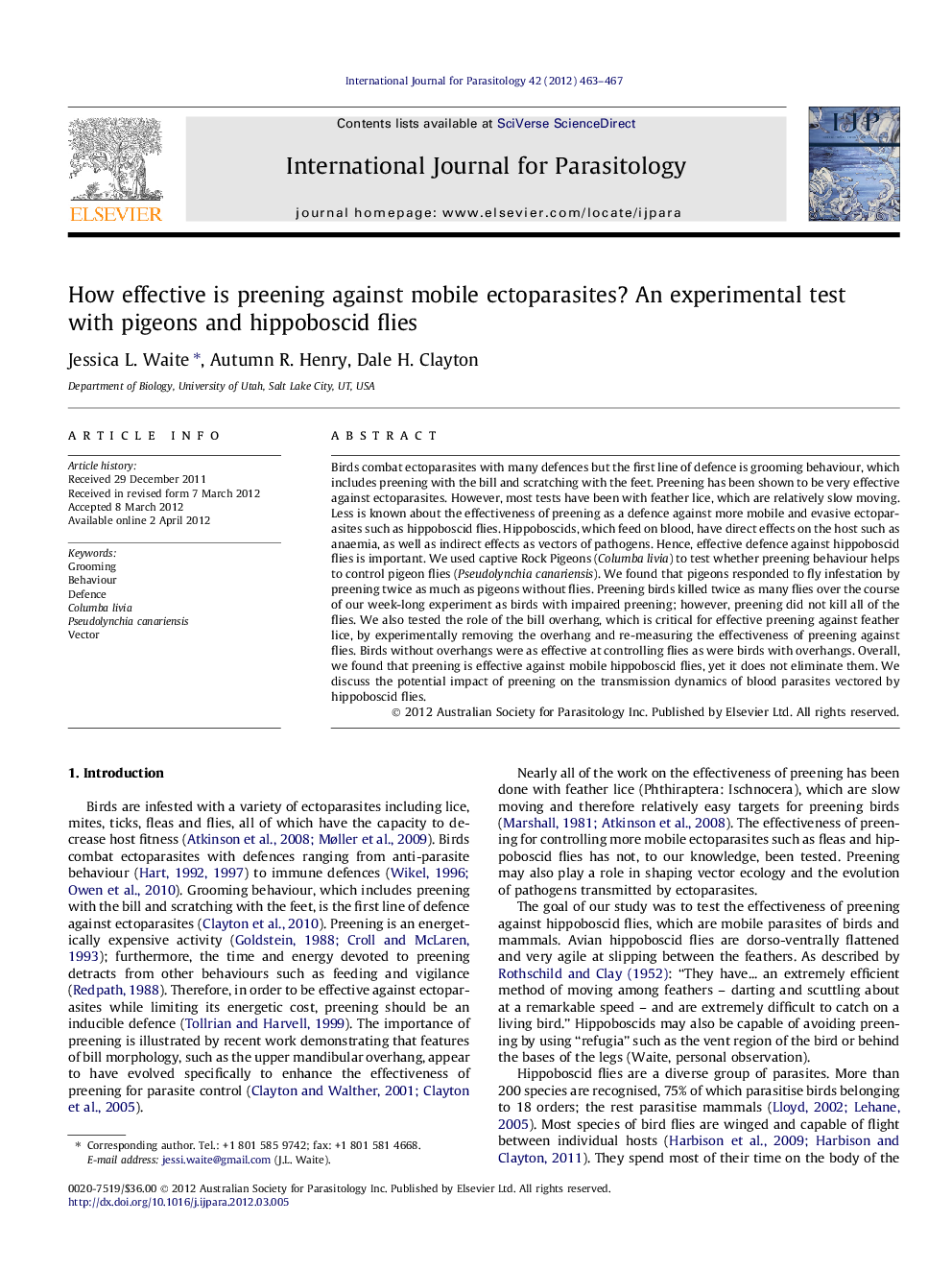| کد مقاله | کد نشریه | سال انتشار | مقاله انگلیسی | نسخه تمام متن |
|---|---|---|---|---|
| 2436145 | 1107279 | 2012 | 5 صفحه PDF | دانلود رایگان |

Birds combat ectoparasites with many defences but the first line of defence is grooming behaviour, which includes preening with the bill and scratching with the feet. Preening has been shown to be very effective against ectoparasites. However, most tests have been with feather lice, which are relatively slow moving. Less is known about the effectiveness of preening as a defence against more mobile and evasive ectoparasites such as hippoboscid flies. Hippoboscids, which feed on blood, have direct effects on the host such as anaemia, as well as indirect effects as vectors of pathogens. Hence, effective defence against hippoboscid flies is important. We used captive Rock Pigeons (Columba livia) to test whether preening behaviour helps to control pigeon flies (Pseudolynchia canariensis). We found that pigeons responded to fly infestation by preening twice as much as pigeons without flies. Preening birds killed twice as many flies over the course of our week-long experiment as birds with impaired preening; however, preening did not kill all of the flies. We also tested the role of the bill overhang, which is critical for effective preening against feather lice, by experimentally removing the overhang and re-measuring the effectiveness of preening against flies. Birds without overhangs were as effective at controlling flies as were birds with overhangs. Overall, we found that preening is effective against mobile hippoboscid flies, yet it does not eliminate them. We discuss the potential impact of preening on the transmission dynamics of blood parasites vectored by hippoboscid flies.
Figure optionsDownload high-quality image (93 K)Download as PowerPoint slideHighlights
► Birds respond to mobile ectoparasitic flies with increased preening.
► Birds are capable of catching and killing flies with their bills.
► The effectiveness of preening is not dependent on bill tip morphology.
► Preening may influence the role of flies as vectors of malaria.
Journal: International Journal for Parasitology - Volume 42, Issue 5, 1 May 2012, Pages 463–467